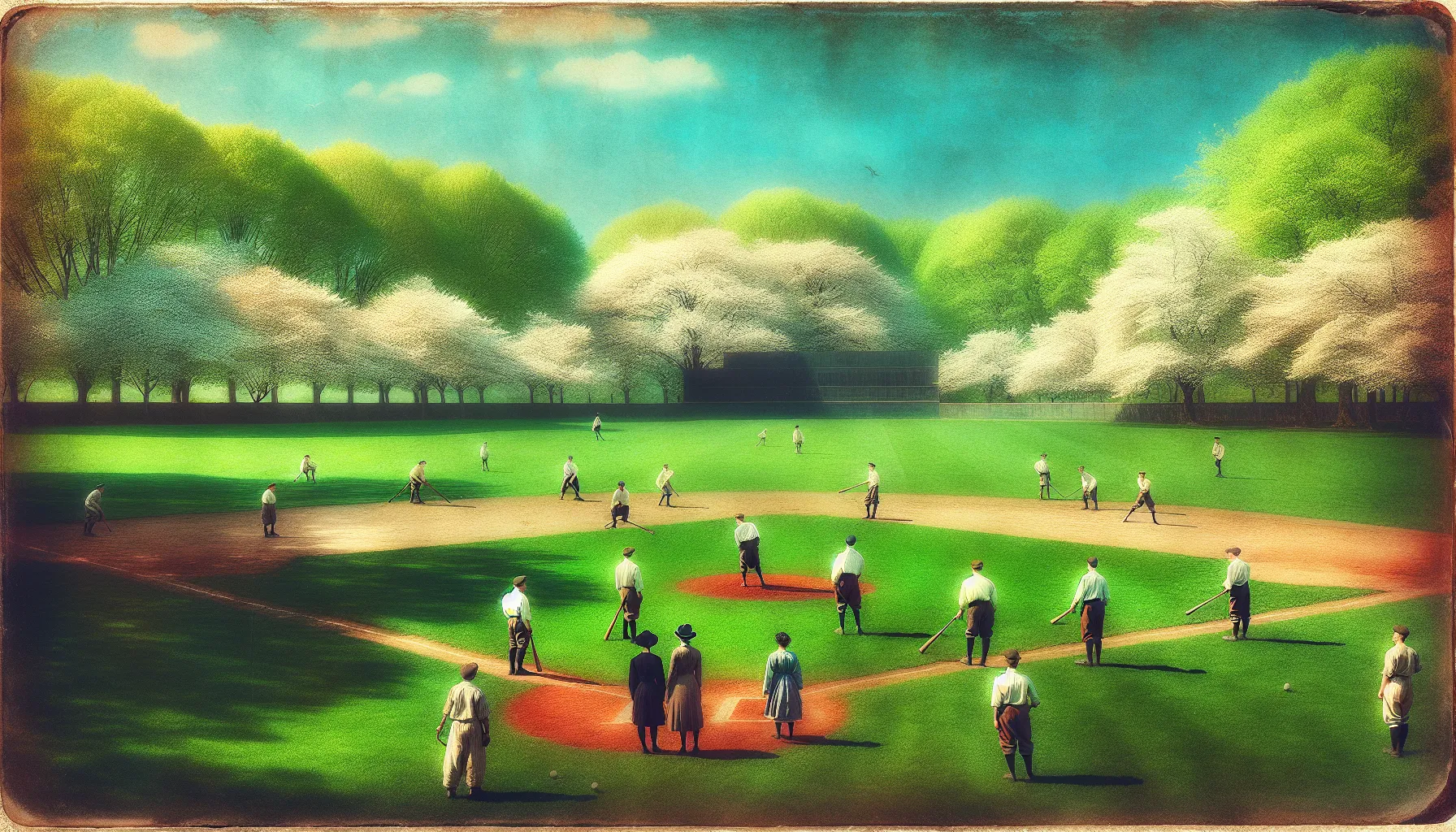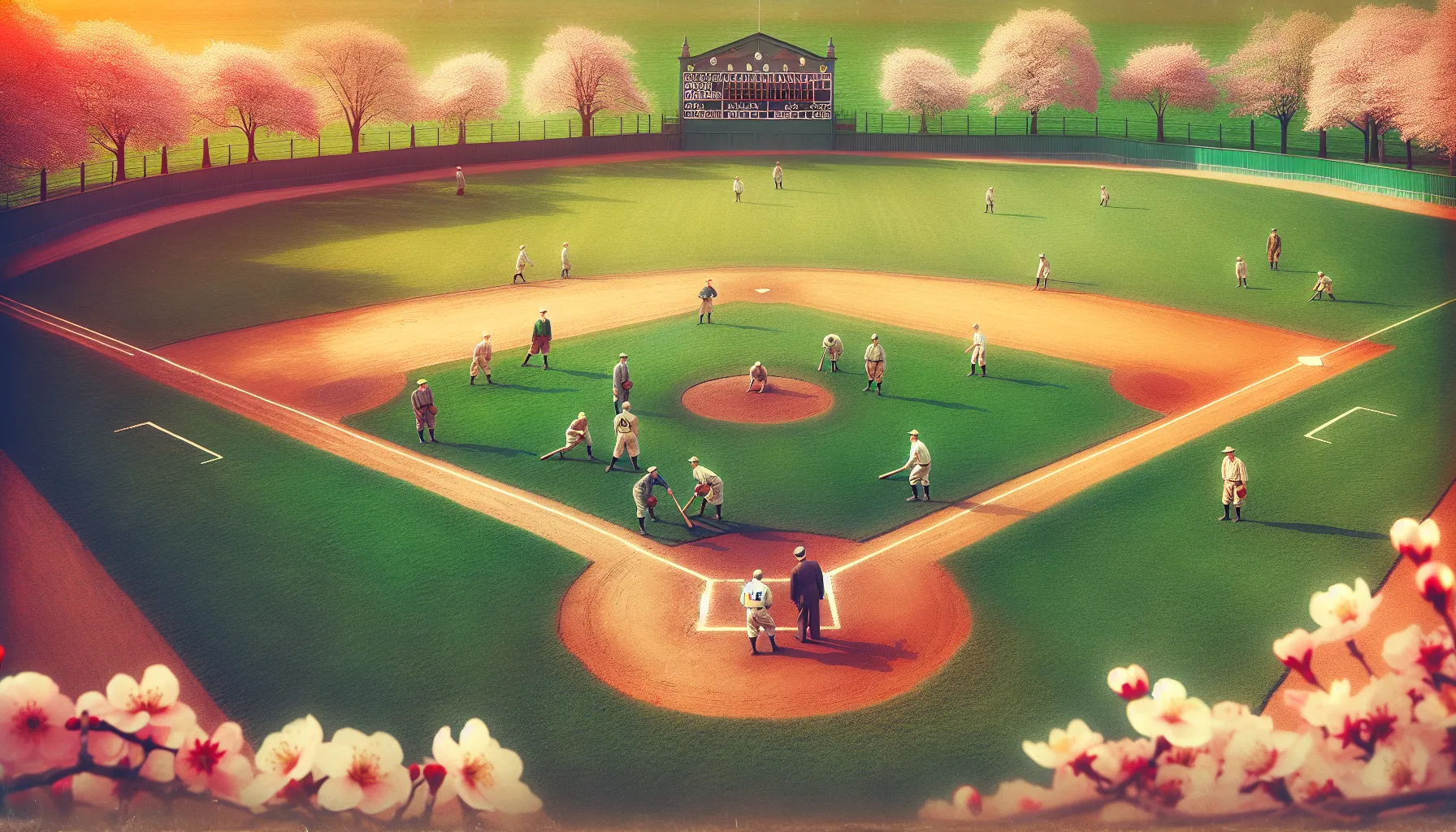When you think of baseball, images of sunny skies, fresh-cut grass, and the crack of a bat likely come to mind. But is baseball truly a spring sport, or does it stretch beyond the season? The timing of baseball’s start and its connection to spring has sparked curiosity among fans and newcomers alike.
Baseball’s roots run deep in American culture, and its seasonal ties play a big role in its identity. From youth leagues to professional games, the sport often kicks off as the chill of winter fades. But what defines a “spring sport,” and does baseball fit the bill? Understanding its seasonal rhythm might just change how you see the game.
Whether you’re a player, a fan, or just curious, exploring baseball’s seasonal connection offers a fresh perspective on this iconic pastime. Let’s dive into what makes baseball’s timing so unique.
Understanding Baseball’s Seasonal Placement
Baseball aligns strongly with spring due to its start in late March or early April. Major League Baseball (MLB) schedules its Opening Day around this time, coinciding with warming temperatures and longer daylight hours. This seasonal connection underscores baseball’s association with renewal and growth.
Spring training occurs in February and March, further anchoring the sport within the spring season. Players use this preparatory period to refine skills, while fans anticipate the upcoming games. The timing provides a transition from the off-season, creating momentum for the official start.
Although baseball begins in spring, the regular season extends into summer, with playoff games continuing into fall. This overlap broadens its cultural impact, yet its roots remain tied to spring’s symbolism.
The Historical Roots Of Baseball As A Spring Sport

Baseball’s deep connection to spring stems from its origin and evolution in 19th-century America. Its seasonal timing reflects both cultural traditions and practical necessities tied to the natural environment.
The Origins Of The Baseball Season
Early baseball leagues, including the National Association of Base Ball Players (founded in 1857), scheduled games starting in spring. Spring provided favorable playing conditions, as snow melted and fields became usable. By establishing spring as the sport’s starting point, these leagues solidified baseball’s alignment with renewal and growth.
When the National League formed in 1876, it continued this tradition of spring openers. Opening Day, typically set in late March or early April, became a significant cultural event that marked the transition from winter to spring. This timing allowed baseball to capitalize on improving weather, drawing communities outdoors to celebrate the sport.
The Influence Of Climate On The Sport
Climate played a critical role in baseball’s scheduling. In the 1800s, most fields were outdoors with minimal maintenance infrastructure. Spring, with its milder weather, provided ideal conditions for games without extreme cold or heat. Grass growth and soil conditions also improved, making it easier to prepare playable fields.
In warmer southern regions, the spring climate contributed to innovations like spring training, first organized in the 1890s. Teams began training in February and March, using the season’s moderate temperatures to refine their skills and prepare for competitive play. This tradition persists, reinforcing baseball’s association with spring.
Modern Perspectives On Baseball’s Seasonal Identity

Baseball’s seasonal identity has evolved, reflecting changes in professional leagues, amateur play, and cultural dynamics. While rooted in spring, its schedule and significance now transcend a single season.
Professional Leagues And Their Schedules
Professional baseball revolves around a lengthy schedule that starts in spring but extends well into other seasons. Major League Baseball (MLB) traditionally opens its season in late March or early April, aligning with springtime. Teams play 162 regular-season games, culminating in October with the postseason and World Series. This structure establishes baseball as a sport not limited to spring but spanning summer and fall.
Preseason activities, like spring training held in February and March, affirm the sport’s spring connections. However, key milestones such as the MLB All-Star Game in mid-July and playoff games in autumn highlight baseball’s adaptability across seasons. This expansive calendar allows baseball to maintain its relevance year-round.
Amateur And College Baseball Seasons
Amateur and collegiate baseball predominantly associate with spring due to their shorter seasons. High school baseball often begins in March, with state championships concluding by late spring or early summer. These schedules align with academic calendars, making spring the logical starting point.
College baseball follows a similar timeline, with games beginning in February or March. The season peaks in June during the NCAA College World Series, marking a transition to summer. This timing underscores the sport’s spring foundation while extending its influence into warmer months.
Amateur leagues and tournaments, often hosted in spring, provide opportunities for younger players to experience baseball’s traditional seasonal ties. However, summer leagues like the Cape Cod Baseball League show how amateur-level baseball can adapt and thrive beyond spring.
Factors That Challenge Baseball’s Spring Identity

Although baseball is deeply linked with spring, several factors complicate its exclusive seasonal identity. These challenges arise from overlaps with other sports and regional weather differences.
Overlapping Seasons With Other Sports
Baseball’s spring identity faces competition from other sports occurring in the same timeframe. Basketball dominates late winter and early spring, with the NBA regular season extending into April and the NCAA March Madness attracting widespread attention. Simultaneously, spring marks the start of major soccer leagues’ critical matches and high-profile tennis tournaments. This overlap divides audience engagement, making it harder for baseball to monopolize spring sports interest.
Additionally, amateur sports leagues further challenge baseball’s exclusivity. High school and collegiate track and field seasons coincide with baseball, while sports like lacrosse and softball also run parallel schedules. These competing activities dilute participation and viewership in baseball, especially among younger demographics.
Weather Variability Across Regions
Weather inconsistencies affect baseball’s alignment with spring, especially in regions with varied climates. Northern states, for example, often experience extended winters, delaying the start of outdoor practices and games. Snow-covered fields and freezing temperatures in March can hinder early-season play, pushing the functional start closer to late spring.
Southern states present a contrasting challenge. Warmer climates enable year-round baseball, diminishing the sport’s spring significance. In these regions, spring simply blends into a longer playing season without a distinct starting point. This weather disparity complicates the narrative that baseball is universally a spring sport, as the experience differs across geographic locations.
Why Baseball Is Still Considered A Spring Sport
Baseball maintains its longstanding association with spring due to deep-rooted traditions, cultural identity, and key seasonal events that anchor the sport within this time of year. Its enduring spring ties are reflected in historical practices and present-day celebrations.
Tradition And Public Perception
Baseball’s perception as a spring sport persists because of its historical alignment with the season. Early leagues organized play during spring to utilize ideal weather, creating a precedent that continues today. Spring training, a hallmark of the sport since the 1890s, exemplifies this legacy and reinforces the sport’s seasonal origin in public consciousness.
You also see baseball symbolically tied to spring themes like renewal and growth. Fans associate the season with fresh starts, just as teams begin a new quest for championship success. High school and college teams emphasize spring competition, further strengthening public perception of baseball as a seasonal tradition.
The Role Of Opening Day Celebrations
Opening Day, often occurring in late March or early April, cements baseball’s identity as a spring sport. This event signifies the formal shift from winter to spring, bringing communities together to celebrate the season’s return. Many fans view Opening Day as a ritual, complete with traditions like first pitches and vibrant stadium experiences.
Major League teams highlight spring-specific elements in these celebrations, such as outdoor events and weather-dependent festivities. For you, the pageantry surrounding Opening Day creates a cultural signal linking baseball with the renewal and optimism of spring, sustaining its relevance as a seasonal hallmark.
Conclusion
Baseball’s ties to spring run deep, shaped by history, tradition, and the rhythms of the season. While its roots are firmly planted in spring, the sport has grown to transcend seasonal boundaries, thriving across summer and fall. Whether you’re a fan relishing Opening Day or a player gearing up for spring training, baseball’s enduring connection to renewal and optimism remains unmistakable. Its evolution only adds to its charm, proving that baseball is much more than just a spring sport—it’s a timeless part of our culture.
Frequently Asked Questions
Why is baseball considered a spring sport?
Baseball is considered a spring sport because its season begins in late March or early April, coinciding with warmer weather, longer days, and the start of spring. Additionally, traditions like spring training, which begin in February and March, reinforce baseball’s association with renewal, growth, and the season of spring.
What is spring training in baseball?
Spring training refers to preseason activities held in February and March, allowing players to practice, refine their skills, and prepare for the regular season. It’s a key tradition that highlights baseball’s connection to spring while building anticipation for the upcoming season among fans.
When does the Major League Baseball (MLB) season start?
The MLB season traditionally begins in late March or early April, marking the start of spring and connecting with the themes of renewal and optimism associated with the season.
How does baseball’s schedule extend beyond spring?
While baseball starts in spring, its schedule spans summer and fall. The regular season extends through September, with the postseason and World Series running into October, showcasing baseball’s year-round cultural significance.
Why does high school and college baseball align with spring?
High school and college baseball seasons typically start in March and conclude by late spring or early summer due to their shorter schedules, making spring the primary season for amateur play and major tournaments like the NCAA College World Series.
What role does weather play in baseball’s connection to spring?
Milder spring weather provides optimal playing conditions as snow melts and fields become usable. However, regional weather variations, such as extended winters in northern states or year-round warmth in southern states, can impact this association.
How does baseball compete with other sports in spring?
Baseball faces competition from spring sports like basketball, soccer, track and field, and lacrosse, which can divide audience attention. Despite this, baseball’s traditions, cultural ties, and schedule help maintain its identity as a spring sport.
Does baseball hold cultural significance beyond spring?
Yes, baseball maintains cultural relevance beyond spring with milestone events like the MLB All-Star Game in July and the postseason in October. These events showcase its adaptability and importance throughout the year.
What historical events solidified baseball as a spring sport?
In the 19th century, early baseball leagues scheduled games in spring to take advantage of better weather and field conditions. Practices like spring training, introduced in the 1890s, and traditions like Opening Day helped cement baseball’s spring identity.
Can baseball thrive outside of spring?
Yes, baseball thrives beyond spring through summer leagues, extended professional seasons, and fall playoff games. Events like the Cape Cod Baseball League and the World Series demonstrate baseball’s ability to captivate audiences across seasons.
